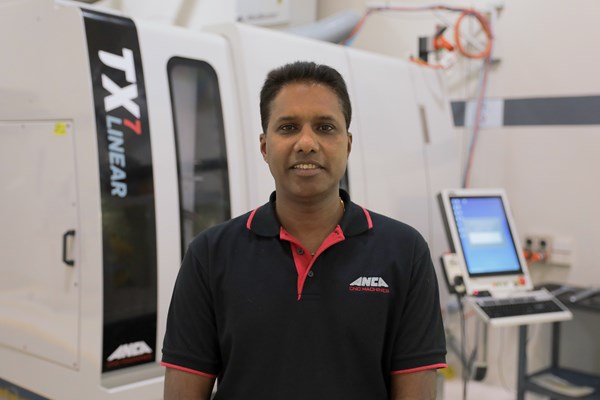What Robotics Means for the Cutting Tools Industry
Friend or foe? Helper or fiend? Here’s what robotics really mean for the cutting tools industry and which pitfalls to avoid.
The rise of the robots is pervasive across all verticals, including the cutting tools industry. As more and more manufacturers turn to leaner processes, many see robotics as a way to increase productivity, improve precision and reduce labor costs. This has led some to ask whether robotics will replace humans completely and has led others to ask if the benefits are just too good to be true.
In 2016, companies introduced more than 34,000 robotic systems in the United States alone, according to the Robotic Industries Association. And while upfront costs can seem prohibitive to many, the reduction in operating costs, ease of programming and potential for increased productivity is enough for many to fully automate their machining.
In particular the cutting tools industry has been using robotics to take over the repetitive tasks once done by humans including manual loading, inspection, and removal of tools and materials. Some manufacturers are even using robotics to work 24/7, taking their production to a ‘lights out’ level with minimal input from humans.
But, as with any advancement in technology, there are manufacturers who are doing it well and others who are not.
When Robots Go Wrong
Probably the most famous case of robotics not meeting expectations is from Tesla, which tried to implement a fully robotic system to manage the production of its Model 3 electric car. The process simply didn’t work and Tesla was unable to deliver the volume of cars it had promised.
After a dismal first quarter in 2018, the company’s CEO Elon Musk was forced to bring in humans to replace the robots. In Mr. Musk’s own words, “Excessive automation at Tesla was a mistake…humans are underrated.”
Tesla’s big mistake was not in automating, but in not considering its whole supply chain and planning appropriately. While parts of the automated processes were increasing production as promised, the chain as a whole was not. In the end there were production bottlenecks down the supply chain. It didn’t matter how fast one part of the process was completed if the next part of the process couldn’t keep up.
What the cutting tools industry can learn from Tesla is that companies need to consider how the entire system works—what connects with what and where the dependencies are. There’s no point in being faster at one stage of the process if the next step can’t keep up. Get the cadence right before jumping in.
When Robots Go Right
In contrast, Fraisa, a Swiss-based business that offers its customer a complete range of solid round tools with end mills, drills and taps, successfully shifted to lights out production for 50 hours a week with surprising results.
Not only did the company increase its productive hours from 105 per week to 150 per week per machine, it reduced its operation costs by half. Workers retained their salaries and the business invested more time in upskilling them in other manufacturing processes. The company now has a more engaged and skilled workforce that focuses on value-added work rather than monitoring manual processes. It has meant less shift work, more family friendly work hours and a win-win-win for customers, the business and its workers.
Fraisa’s success comes from ensuring its machines are fully connected to its ERP systems, so that the company can monitor efficiencies throughout the entire supply chain.
It’s Not Set and Forget
Other bottlenecks may occur because of a lack of in-house programming skills. While a company’s general labor costs may be cut, it needs to allow extra hours for programming. Companies either need to employ specialized robotic programmers or invest in a system that translates the requirements—the company tells the application what it needs, and the system tells the robots how to do it.
Robots are here to support the humans in the cutting tool industry and beyond. In return, robots need planning, monitoring and programming support from us humans to be their best.
About the Author
Thomson Mathew
Thomson Mathew is ANCA’s lead software expert and works currently as Software Product Manager. Starting his career at ANCA in 1997, he worked hand with customers in all regions as application engineer to find solutions and test the limits of the ANCA’s software products to design and grind the best tools. From there he led the research and development team to design and test laser Plus, P-axis, and various software products including ToolRoom, ToolDraft, Management suite and CIM3D releases.
RELATED CONTENT
-
The Many Sides of Workholding
Here's a broad look at different ways to approach workholding, from bar feeders to collet chucks to robotics.
-
Bar Feeder Basics
Some primary factors are often overlooked when considering how to justify the implementation of a bar feeder for turning operations.
-
Checklist for Lights-Out Manufacturing
Many shops of various sizes are trying to hop on the lights-out bandwagon. This article looks at some things to consider and check out before “hopping.”



